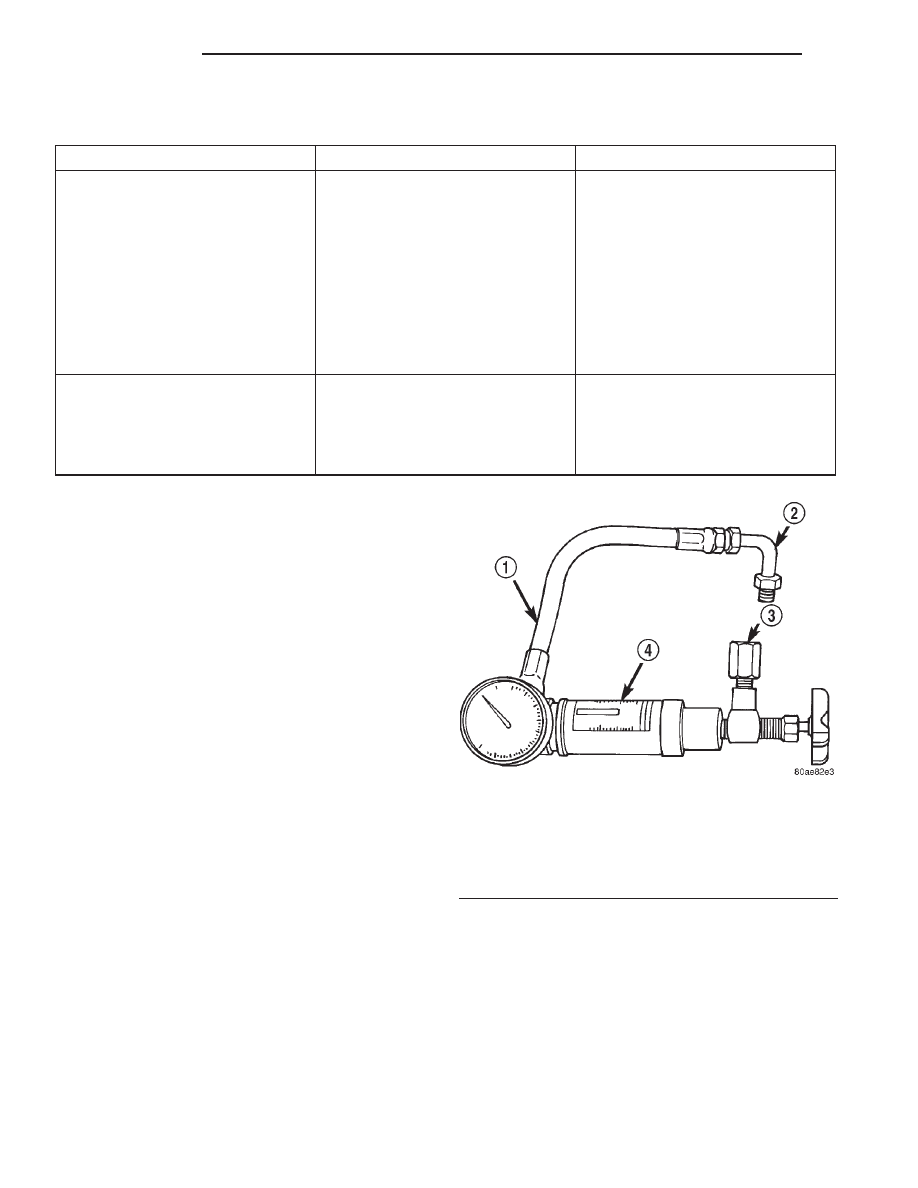Dodge Durango (DN). Manual - part 23

LOOSE STEERING AND VEHICLE LEAD
CONDITION
POSSIBLE CAUSE
CORRECTION
EXCESSIVE PLAY IN STEERING
WHEEL
1. Worn or loose suspension or
steering components.
1. Inspect and repair as necessary.
2. Worn or loose wheel bearings.
2. Inspect and repair or adjust
bearings.
3. Steering gear mounting.
3. Tighten gear mounting bolts to
specification.
4. Gear out of adjustment.
4. Replace gear.
5. Worn or loose steering coupler.
5. Inspect and replace as
necessary.
VEHICLE PULLS OR LEADS TO
ONE SIDE.
1. Tire Pressure.
1. Adjust tire pressure.
2. Radial tire lead.
2. Rotate tires.
3. Brakes dragging.
3. Repair as necessary.
4. Wheel alignment.
4. Align front end.
POWER STEERING FLOW AND PRESSURE
The following procedure is used to test the opera-
tion of the power steering system on the vehicle. This
test will provide the gallons per minute (GPM) or
flow rate of the power steering pump along with the
maximum relief pressure. Perform test any time a
power steering system problem is present. This test
will determine if the power steering pump or power
steering gear is not functioning properly. The follow-
ing pressure and flow test is performed using Power
Steering Analyzer Tool kit 6815 (Fig. 3) and (Fig. 4)
Adapter Kit 6893.
FLOW AND PRESSURE TEST
(1) Check the power steering belt to ensure it is in
good condition and adjusted properly.
(2) Connect pressure gauge hose from the Power
Steering Analyzer to Tube 6844.
(3) Connect Adapter 6826 to Power Steering Ana-
lyzer test valve end.
(4) Disconnect the high pressure hose from the
power steering pump.
(5) Connect the tube to the pump hose fitting.
(6) Connect the power steering hose from the
steering gear to the adapter.
(7) Open the test valve completely.
(8) Start engine and let idle long enough to circu-
late power steering fluid through flow/pressure test
gauge and to get air out of the fluid. Then shut off
engine.
(9) Check fluid level, add fluid as necessary. Start
engine again and let idle.
(10) Gauge should read below 862 kPa (125 psi), if
above, inspect the hoses for restrictions and repair as
necessary. The initial pressure reading should be in
the range of 345-552 kPa (50-80 psi).
(11) Increase the engine speed to 1500 RPM and
read the flow meter. If the flow rate (GPM) is below
specification, (refer to pump specification chart for
GPM) the pump should be replaced.
Fig. 3 Analyzer With Tube and Adapter For 5.2L &
5.9L
1 – GAUGE HOSE
2 – TUBE
3 – ADAPTER FITTINGS
4 – ANALYZER
19 - 4
STEERING
DN
DIAGNOSIS AND TESTING (Continued)